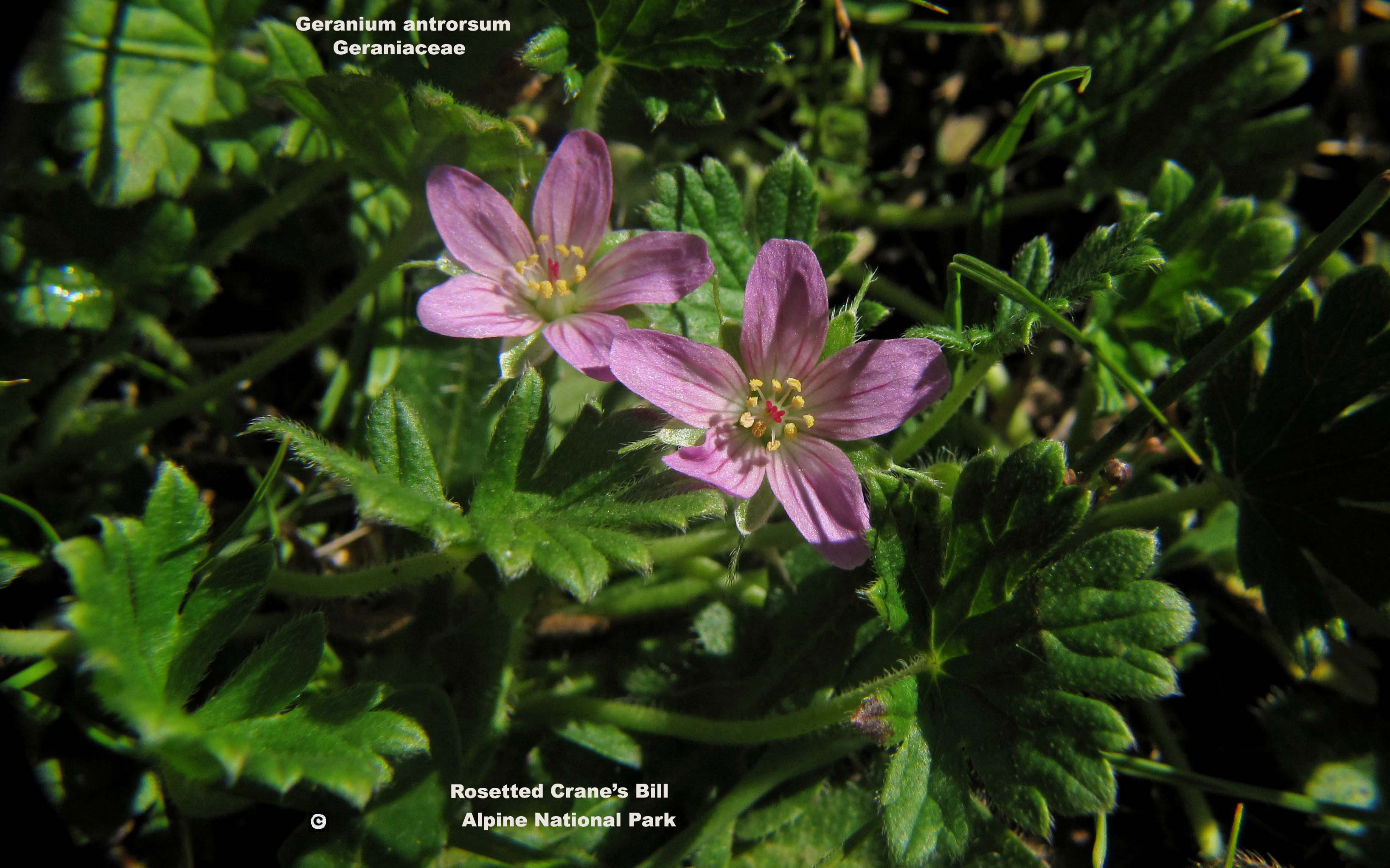
Rosetted Crane's-bill
Geranium antrorsum
Much-branched herb to 10 cm wit a fleshy or woody taproot. Crowded dissected leaves at the base of the plant, other leaves 5-7 lobed with coarse flatly-pressed hairs. Mauvish-pink solitary flowers on very short flowering stems. Hairy round leaves form a rosette at the base of the plant and are divided into 5-7 lobes with virtually no stems.
| Details | |
|---|---|
| Flora Type | Herbs |
| Distinctive Features | The stem is covered in long fine hairs that are directed upwards (antrose). Long bright pink or magenta petals are characteristic. |
| Biology | Perennial. Subalpine grassy country. Seed has an awn or bristle that helps it to pierce the soil crust for germination. |
| Native Status | Native |
| Flowering Time | Dec-Apr |
| Taxonomy | |
|---|---|
| Phylum | Tracheophyta (Vascular Plants) |
| Class | Magnoliopsida (Flowering Plants) |
| Order | Geraniales |
| Family | Geraniaceae |
| Genus | Geranium |
| Species | neglectum |
Many Geranium species have branched or single tapered tuberous taproots that were roasted as food by Aboriginal people. This species had a fleshy much-branched taproot. The roots of some species contain high levels of tannins and were used as an anti-diarrhoeal.
| Interesting Facts | |
|---|---|
| Native Status | Native |